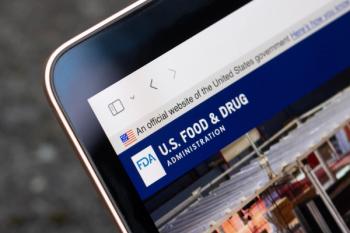
Breakthrough Discovery Extends the Life of Antiretroviral Drugs in HIV
Conventional HIV drugs could be transformed into once a month dosing.
A novel injectable drug formulation lead to a new discovery that opens storage areas inside cells for antiviral drugs to extend their actions.
The long-acting, slow effective release antiretroviral therapy (LASER ART) involves a formulation of injectable drugs, which were developed through pharmacological changes in the drugs’ chemical structures, and also protects the drugs’ ability to contain infection.
The pharmaceutical agent URMC-099 is not an anti-HIV medication. Instead, it opens storage areas in cells where drugs can be maintained. According to the investigators, this approach extends the intervals for dosing, and allows physicians to administer the drug over an extended period of time.
This breakthrough is significant, because it allows conventional drugs that need to be taken once or twice per day to be shifted to once per month dosing. Furthermore, it can ease the burden of patients and caregivers. The results of the study were published in the Journal of Clinical Investigation.
“This will likely have a strong global impact on HIV/AIDS health care,” said investigator Harris Gelbard, MD, PhD. “Getting people to take medication every day is difficult. To be able to take medication once a month or even longer will make it much easier for patients to be compliant while at the same time help bring the drug to tissues of the body that are not easily reached by conventional medicines.”
The injectable drug is designed to bypass oral absorption, allowing the drug to reach areas of the body where
Previous studies have shown 2 additional drugs that can be modified in this way. However, both come with limitations because each injection requires several ounces of drugs with larger volumes in each injection. But with the new medication, the amount of drug given could be cut in half, according to the investigators.
LASER ART enables drug crystals to reach areas in tissues and blood, where it then remains. According to the study, these drug crystals are protected against metabolism in the liver, and excretion in the kidney and urine.
When LASER ART was merged with URMC-099 it had no antiviral effect. However, when co-administered with antiretroviral medicines, it enhanced viral suppression.
The results of the study showed that slow drug dissolution, poor water-solubility, and improved bioavailability could lead the drug to sites with active viral growth, and accelerate the clearance of the virus.
“We showed that 1 drug can deliver the other drug to sites inside the cells where the virus grows, and at the same time sequester the drug crystals at sites protecting it from degradation,” said investigator Divya Prakash Gnanadhas, PhD. “The drug inside the cell slowly dissolves from the crystal and is released into the blood.
“This is a new way to extend the actions of drugs. It is a means to improve drug effectiveness and allow patients to take drugs without interruption.”
Moving forward, the investigators plan to formulate URMC-099 with drug cocktails to determine whether it could extend the half-lives of other antiretrovirals or additional drug types. The overall goal is to combine URMC-099 with drugs that have been limited for human use due to frequency and bioavailability of the required dosage.
Newsletter
Stay informed on drug updates, treatment guidelines, and pharmacy practice trends—subscribe to Pharmacy Times for weekly clinical insights.




















































































































































































































